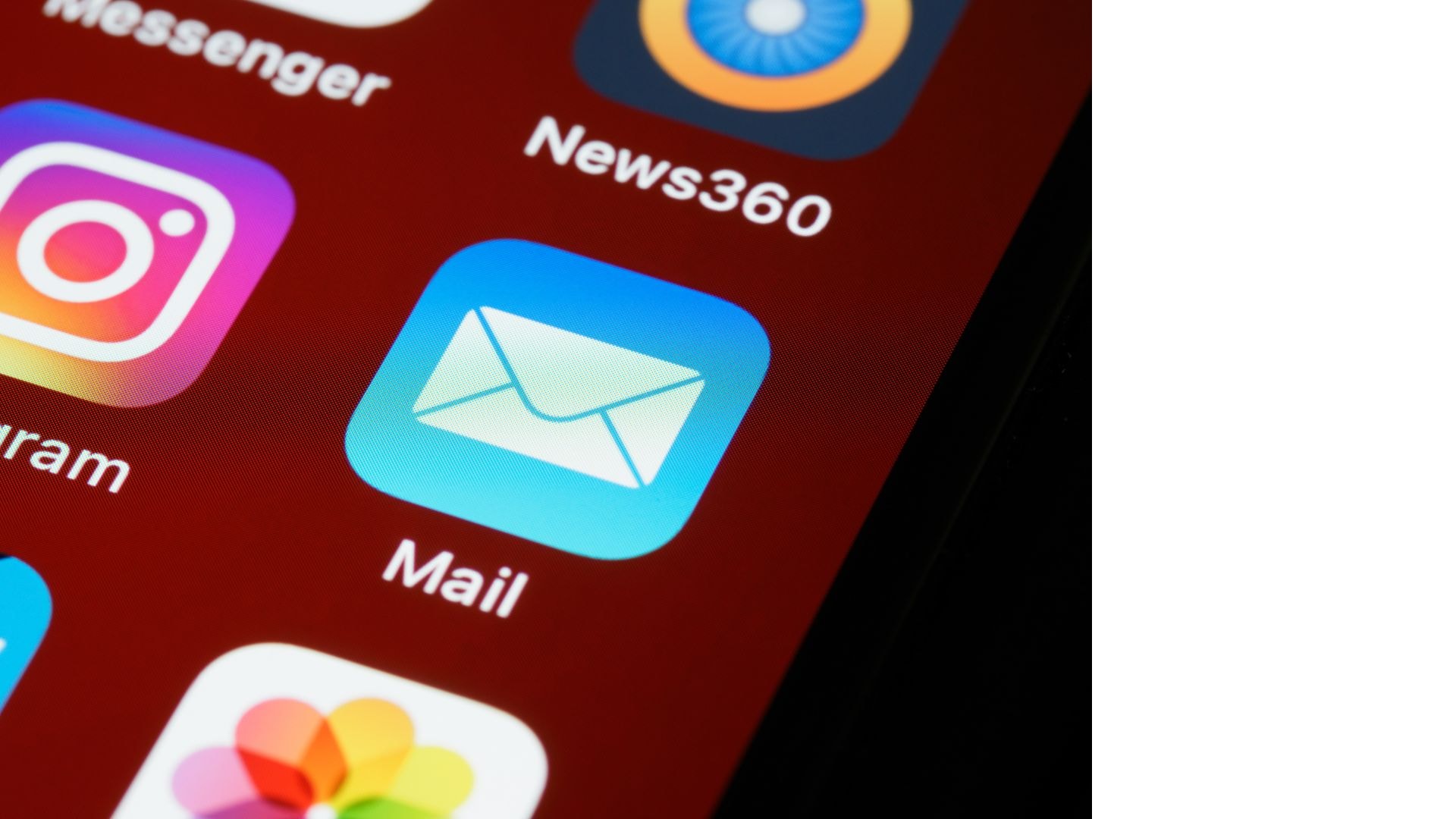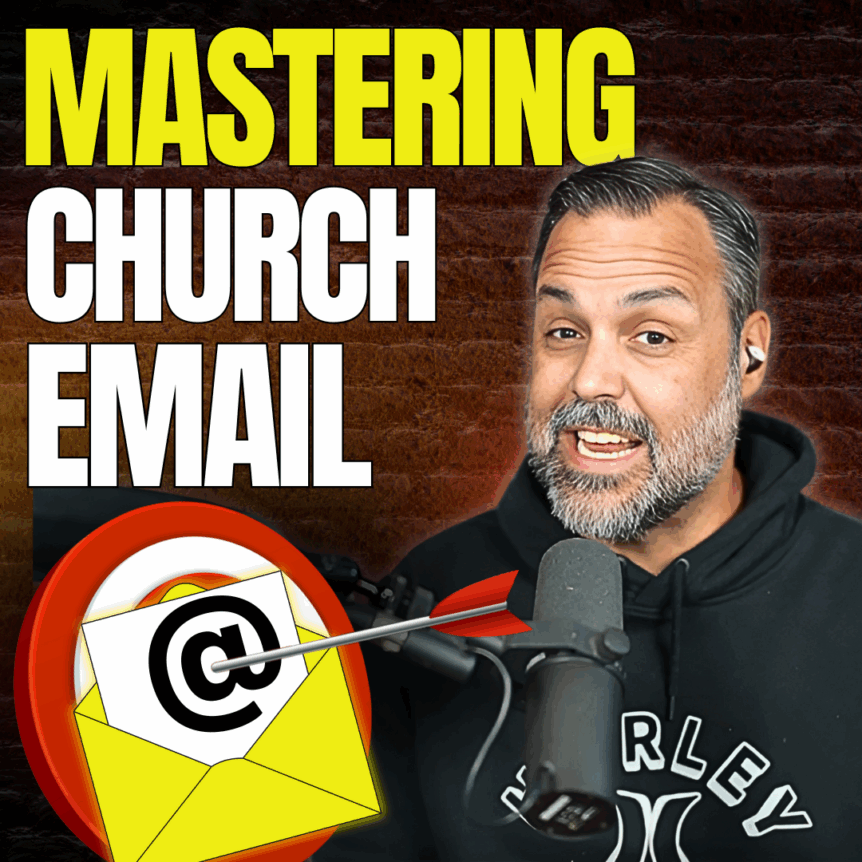Churches today have more tools than ever to communicate with their members. But in all the digital noise—text messages, DMs, and social media posts—one channel continues to quietly deliver results: church email marketing.
Email may seem old-school, but don’t let its age fool you. When used well, it’s one of the most powerful tools in a church’s communication strategy. Whether it’s sharing sermon notes, sending event reminders, or welcoming new visitors, the right email marketing strategy can help churches engage, grow, and disciple more effectively.
In this episode, we’re ranking the top 11 church email marketing tactics. Whether you’re brand new to email or looking to optimize your strategy, these tips will help you get the most out of your email marketing platform and better connect with your church members.
Let’s jump in.
Estimated reading time: 7 minutes
Table of contents
Church Email Marketing: The Basics

At its core, church email marketing is all about using email to reach, inform, and disciple your church community. It’s a direct way to communicate with people who have already shown interest in your ministry—whether they’re long-time members, recent visitors, or online followers.
Here’s why churches love email marketing:
- It’s cost-effective.
- It’s measurable.
- It works—even in 2025.
And it’s not just for Sunday announcements. A solid email marketing strategy can help with discipleship, event promotion, prayer chains, digital giving, volunteer recruitment, and more.
You’ll need a good email marketing service provider (think email service providers like Mailchimp, MailerLite, or Constant Contact) and a clean email list—ideally synced with your church management software. Don’t forget to have a solid way to collect email addresses from members. From there, it’s all about using the right tactics to make your emails engaging, useful, and timely.
Ranking System
If we’re going to rank church email marketing tactics, we need a system. And in true ReachRight fashion, we’re making it fun. Here’s how we’re rating each tactic using the three D’s:
- Divine – These tactics are must-haves. They just work. Every church should be doing them.
- Decent – These can be great in the right context. Not for everyone, but worth a try.
- Dusty – These tactics either feel outdated or don’t produce results. Use with caution—or not at all.
Now let’s get into our ranked list of the best church email marketing tactics.
Top 11 Church Email Marketing Tactics

Now it’s time to jump into our list of the top 11 church email marketing tactics. Each of these tactics have their strengths or weaknesses, but some are more effective in 2025 than others. How you incorporate these tactics into your church email marketing strategy is up to you.
Let’s dive in!
1. Weekly Email Newsletters
The weekly church email newsletter is still the cornerstone of most email marketing campaigns—and for good reason. It’s where you keep everyone in the loop.
Include highlights from the sermon, upcoming events, prayer requests, volunteer needs, and links to your social media platforms. Keep it simple and scannable.
This works because it creates a rhythm and expectation. Members know when it’s coming and where to find key info.
2. Personalized Welcome Emails
When someone fills out a connect card—whether online or in person—you should have an automated email marketing sequence ready to go. A warm, personalized welcome can make all the difference.
Send a short message from the pastor, include a bit about your church’s mission, and invite them to take a next step.
First impressions matter. A well-crafted welcome email builds trust and shows you care.
3. Automated Event Reminders
Your church hosts events. People sign up. And then… they forget.
Set up automated email reminders 3 days before, 1 day before, and the morning of an event. Sync this with your church management software if possible.
Here’s the thing: people are busy. Timely reminders boost attendance. Automate email campaigns so that you never miss an email blast.
4. Segmenting Your Audience
Not every email should go to everyone. One of the biggest mistakes churches make is blasting the same message to the entire list.
Instead, create email segments: parents, youth, volunteers, new visitors, small group leaders, etc. Personalized communication to specific groups increases engagement and reduces unsubscribes.
5. Strong Subject Lines
If they don’t open the email, they’ll never see what’s inside. A boring or vague subject line can tank your open rates.
Use curiosity, clarity, and urgency. Think:
- “You’re invited: Easter at Grace Church”
- “We need volunteers for this Sunday!”
- “A message from Pastor Tim (It’s a big one)”
Good subject lines increase open rates—which is half the battle.
6. Story-Based Emails

Emails that tell a short story—like a testimony, a ministry win, or a transformation moment—can be powerful. People remember stories more than announcements.
Try starting your newsletter with a 3-sentence story, then transition to your updates. Stories create emotion, and emotion builds connection.
7. Mobile-Optimized Design
Most people check their email on their phones. If your email looks weird on mobile, you’re losing readers.
Make sure your email marketing platform uses mobile-responsive templates and keeps formatting simple.
Remember: better readability means better engagement.
8. Integrating Social Media Links
Your emails should include icons or links to your social media platforms. That way, people can follow you wherever they spend time online.
Also consider embedding your latest Instagram photo or Facebook video. It boosts cross-channel engagement and drives more traffic.
9. Using Emojis & GIFs
This one’s controversial. Emojis and GIFs can help emails feel more casual and fun… but use too many, and you look unprofessional or spammy.
A simple 🙌 in a subject line? Great. A dancing cat meme in your baptism email? Not so much. Overuse can cheapen your message.
10. Long Devotional Emails
It’s tempting to send out full devotionals or theological deep dives by email. But attention spans are short, and long text-heavy emails often get ignored.
Instead, tease the devotional in the email and link to it on your website or blog. Long blocks of text get skimmed or skipped.
11. Email Surveys
Want feedback on a recent sermon series or church event? Send a short email with a 1-2 minute survey.
Ask questions like:
- What did you enjoy most about the event?
- How can we serve you better?
Feedback helps you improve. Just don’t overdo it.
Wrapping It Up

Church email marketing isn’t just about sending announcements—it’s about building relationships. The right email marketing strategy helps your church stay connected, informed, and unified throughout the week.
To get the most out of your efforts:
- Choose the right email marketing platform with the right email marketing tools.
- Integrate with your church management software.
- Focus on personalized communication.
- And use tactics that are proven to work.
Whether you’re reminding members about upcoming events, welcoming new guests, or sharing testimonies of what God is doing, email marketing is still one of the most effective tools in your ministry toolbox.
Choose wisely, test often, and keep your emails short, clear, and full of grace.
More Resources on Email Marketing





